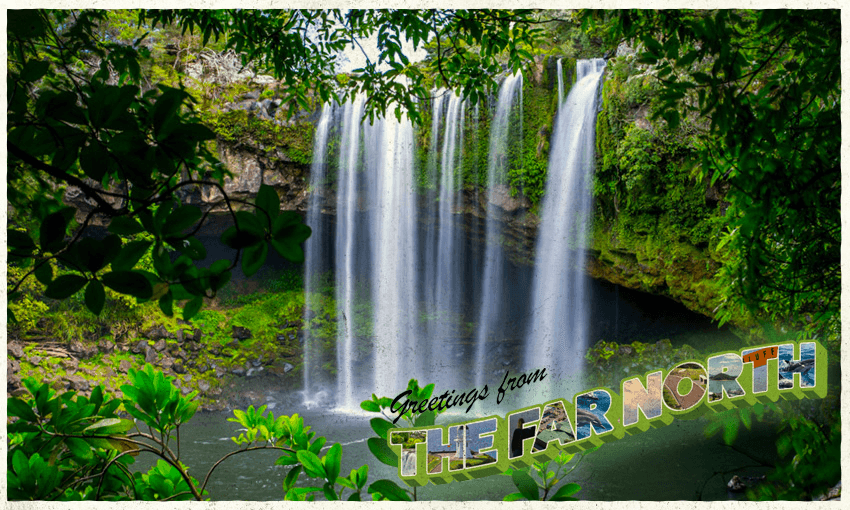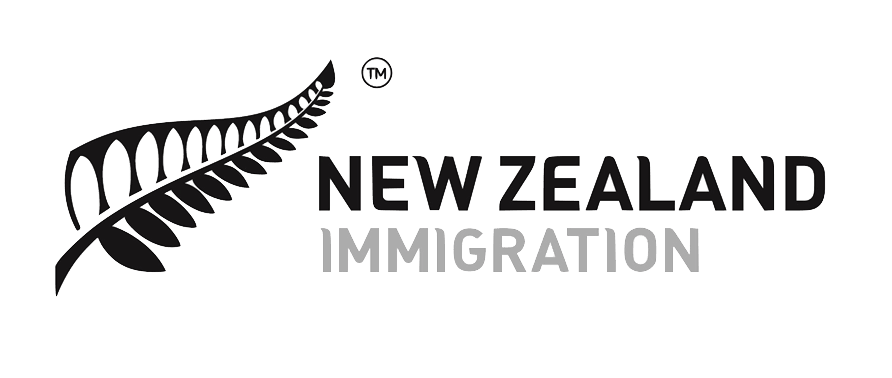From golden beaches to lush kauri bush, a visit to Te Tai Tokerau offers a true showcase of New Zealand’s natural splendour. We’ve put together a list of all you need to know before you explore the Far North this summer.
If you’ve got friends or relatives visiting Aotearoa, top of their list should be sorting out their NZeTA (New Zealand Electronic Travel Authority). Head to the Immigration New Zealand website for all the details.
The winterless North is known for its stunning coastlines and subtropical climate, and you’ll get the best out of it in the months between October and April. Stretching from Cape Reinga to the Bay of Islands, there is so much to see and do in the Far North, perfect for travellers of all kinds, from adrenaline seekers to history buffs, to those wanting to just relax in the shade with a book.
If you’re new to the region, here are six places to visit and things to do in the Far North which will make sure you’ll never want to leave.
The Best Falls
As well as thousands of retirees and millions of kiwifruit, Kerikeri is home to many hidden waterfalls and streams in walking distance from the main town. One of the most popular is Rainbow Falls, named for the magnificent colour produced by the cascading water when it’s hit by the sun. A short (wheelchair accessible) walk will take you to viewing platforms above the waterfall, from which, on a good day, you will be able to see the rainbows reflecting off the water.
Rainbow Falls is the perfect swimming spot for those keen for a freshwater dip, and a nice 40 minute walk to the Kerikeri town centre for a bite to eat afterwards, (The Bakehouse is always a good option).
The Best Cellar Door
Take a ferry ride over to Russell, the tiny town across the water from Paihia. The coastal village is widely regarded as New Zealand’s first capital city, which is not entirely true, but it is seven kilometres away from New Zealand’s first capital, which is… something. From the ferry it’s only a short drive to one of the Far North’s most exquisite lookout points. The Omata Estate winery boasts coastal views back towards Paihia, and whales and dolphins can often be seen hanging around in this bay – if you’re lucky they might swim alongside the ferry on your way over.
The boutique winery offers tastings at their cellar door, as well as a selection of platters and pizzas made with seasonal local produce. You’ll be hard pressed (just like the grapes!) to find a better view to dine over. Sip on an award-winning Syrah in this peaceful spot looking north onto the vineyards as the sun sets.
The Best Beach
In a secluded area on the western side of the Karikari Peninsula lies an undiscovered paradise. Rangiputa Beach is just a short stretch of sand, shaded by Pohutukawa trees dotted along the roadside. A 25 minute drive from coastal town Taipa, the white sand beach is hard to access without a vehicle, but once you’re there it’s a stunning spot to spend the day. Take a picnic so you don’t have to leave for lunch, and swim to your heart’s content in waters so warm you’ll almost be suspicious.
The water is very calm and shallow for at least ten metres, making Rangiputa beach perfect for children who are not confident in waves. Straight from a postcard, it feels like a tropical island, and the positioning in the mouth of a cove protects Rangiputa beach from the cooler winds and rougher surf of less sheltered areas. Here you can’t surf, you can’t boogie board, you can’t really do anything except relax… and it is heaven.
The Best All-In-One Cafe
If you find yourself in Kaitaia, there’s no better place to stop off for coffee and a meal than the Gecko Cafe. Roasting their own coffee beans on site, the Gecko Cafe is popular with locals – and there’s a good reason for that. A huge selection of cabinet food as well as an a la carte menu, catering to vegetarian, vegan and gluten free diets will get you filled to the brim and ready for the rest of the day.
They’re also tipped to have the best fluffies in the region, so if you have a little one, this is the place to go.
The Best Climb
On your way to see the lighthouse at the very top of Cape Reinga are the Te Paki sand dunes. At 150 metres high, the dunes are popular with adrenaline-seeking visitors, but if that’s not your thing, the stunning views from the top are still worth the short detour.
Boogie boards are necessary to get the most out of this attraction, and they can be hired on site. Once you’ve boarded down, there’s no other way to get up than by foot, so be prepared for sore legs from the steep climb, and if you’re a New Zealand summer rookie, jandals are recommended so your feet don’t burn on the hot (hot!) sand.
The dunes themselves are a stunning change in landscape from the green hills of the rest of rural Northland, stretching for kilometres in every direction.
The Best Sweet Treats
If you have any spare time, a trip to the Makana Confectionery factory in Kerikeri is worth it just for the smell when you walk inside. Famous for their chocolate-coated macadamia brittle (offered as a free sample most days), you’ll find it hard to leave without a box of something to take home. Makana confectionery makes a perfect gift for anyone with a sweet tooth, if you can resist opening the box on the way home.
For more from our ‘Top of the List’ series, check out the below:
Five of Nelson’s must-try attractions
Five ways to fall in love with the Coromandel
Five essential tips for visiting Taranaki this summer
A starter’s guide to summering in Central Otago
This content was created in paid partnership with Immigration New Zealand. Learn more about our partnerships here.


